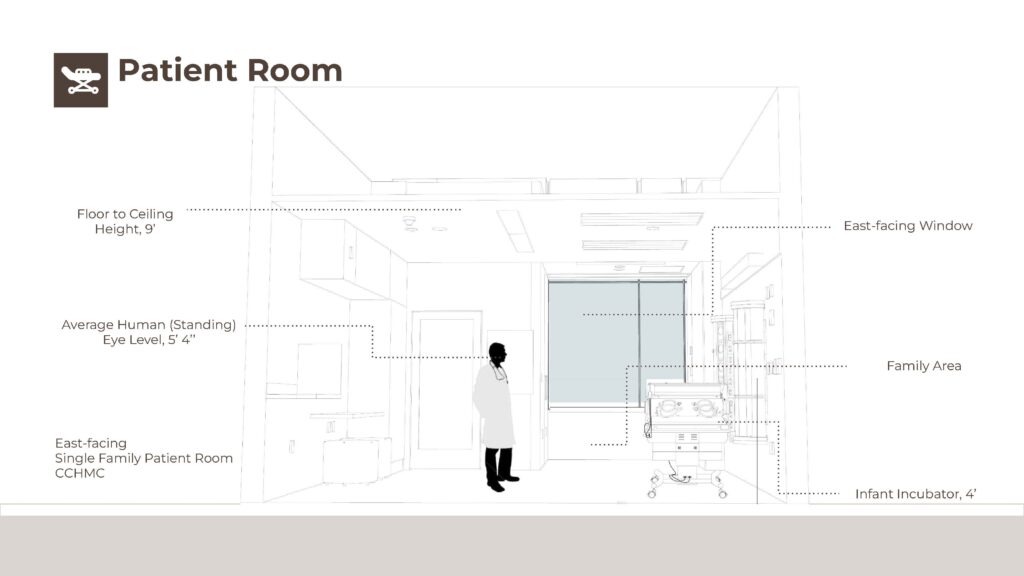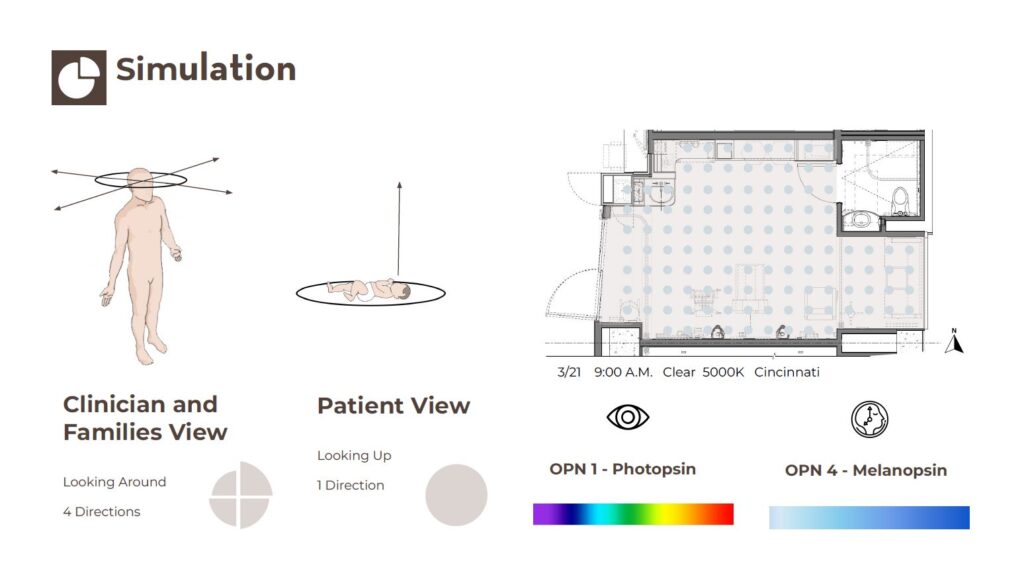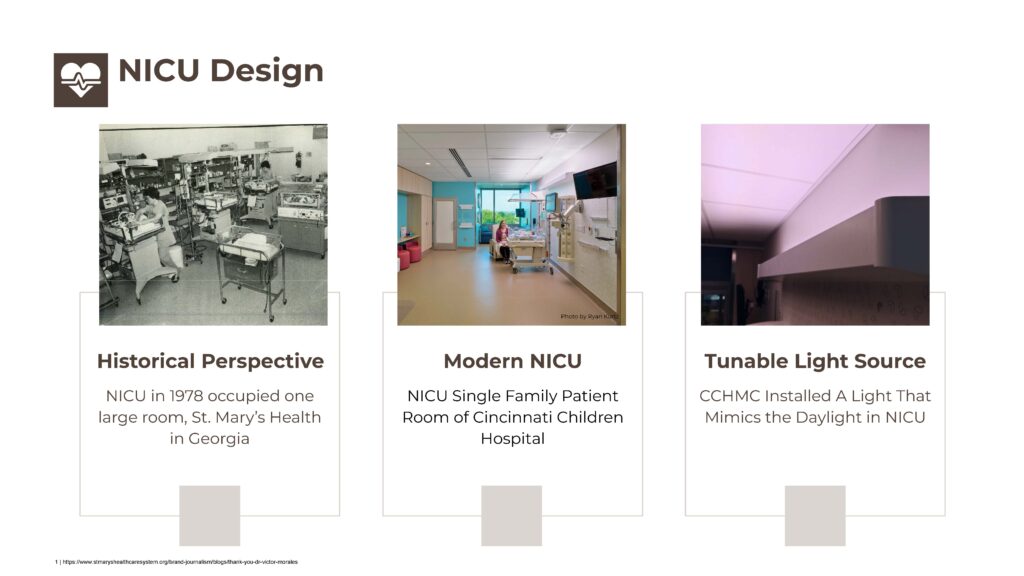February 18, 2022
Visual and Non-visual Effects of Light on Health in Neonatal Intensive Care Units
ARC Fellow: Zining Cheng
Degree Program: M Arch / MS Arch, Design Technology (dual degree)
Faculty Advisor: Mehlika Inanici, Architecture
Firm: ZGF
Firm Advisors: Marty Brennan and Kelly Chanopas
Cincinnati Children’s Hospital Medical Center: Dr. James Greenberg, Dr. Richard Lang, and Sara Cao
Project dates: Autumn 2021 – Spring 2022
Read the Project Plan
View the Video
Read the Article
Read the Final Report
More about the project:
Research in neonatal intensive units (NICU) shows that surplus exposure and brightness can be extremely damaging to the growth of premature babies, but circadian light regimes can exert a positive influence on fetals’ brains, eyes and other development. It is necessary to control and manage the amount and the spectra of light on neonatal care, and determine which wavelengths, intensity and duration, are most important for supporting womb-like development. This research aims to develop daylighting and electric lighting (tunable light fixtures) design guidelines for NICU settings. Along with appropriate glazing and shading systems, electric lighting systems could provide the targeted range of wavelengths and intensities.

East Facing Single Family Patient Room of Cincinnati Children Hospital Medical Center (Zining Cheng)

Simulation Setting (Zining Cheng)

(1) NICU in 1978 occupied one large room, St. Mary’s Health in Georgia.
(2) NICU Single Family Patient Room of Cincinnati Children Hospital Medical Center, ZGF. Photo by Ryan Kurtz
(3) Cincinnati Children Hospital Medical Center A Light That Mimics the Daylight in NICU
Source: (1) St. Mary’s Health, Georgia (2) ZGF Architects. Photo by Ryan Kurtz (3) Cincinnati Children Hospital Medical Center)

Visual and Non-visual Response to Light (Zining Cheng)
